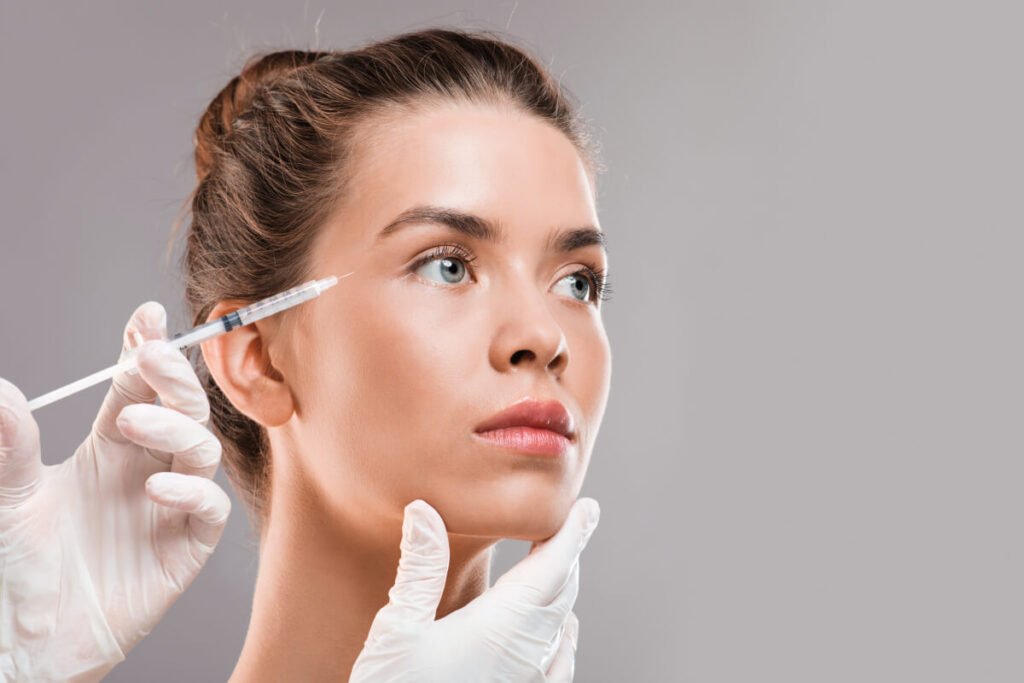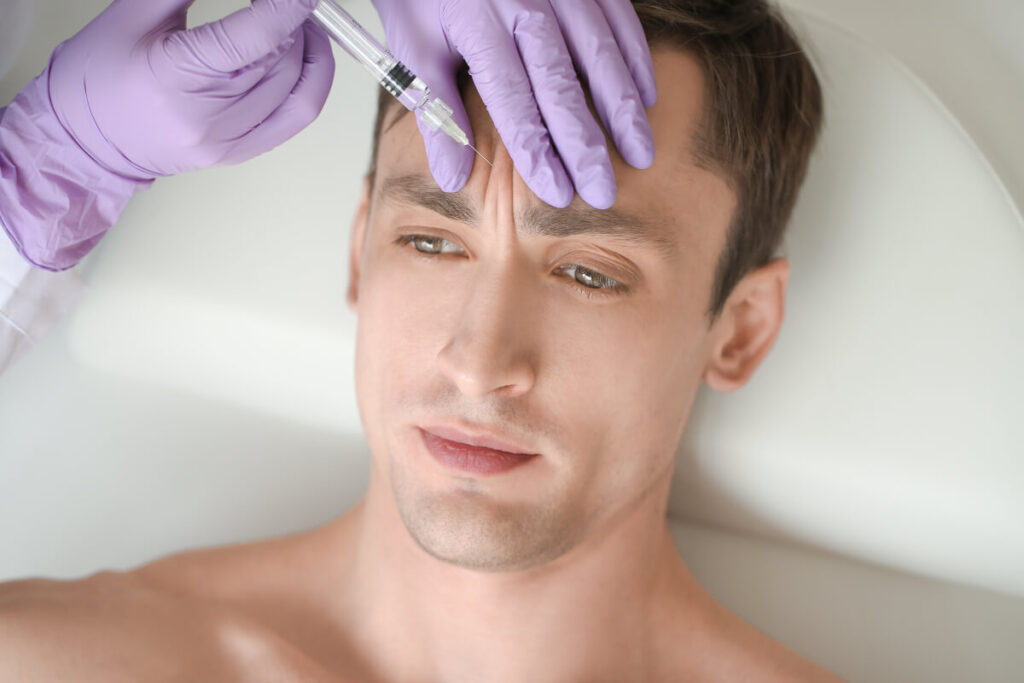Botox injections are popular for their anti-aging capabilities. Aside from being the go-to anti-aging regimen, these neurotoxin injectables are also a great treatment option for chronic migraine. But like many medical and cosmetic procedures, Botox for migraine is also associated with certain risks that patients should be aware of – like headache and neck stiffness.
So why do some patients experience aggressive symptoms after Botox treatments for migraine? Patients may experience headaches after their Botox treatment because of the over-contraction of the treated facial muscles, potential impurities in the neurotoxin injectable, or muscle atrophy in the treated site. To minimize the adverse effects of the treatment, patients need to ensure they’re a good candidate, find a qualified provider, get the right Botox dose, and follow the doctor’s aftercare instructions.
Is It Possible for Botox to Make Chronic Migraine Worse?
When someone mentions Botox, the first thing that comes to mind is the cosmetic treatment that erases wrinkles and frown lines. Although this is the primary use for the neurotoxin injection, Botox is also the number 1 prescribed branded treatment for chronic migraine.
If the patient experiences migraine attacks for at least 15 days in a month, the doctor may suggest Botox treatments to reduce the intensity and frequency of headaches. But like other procedures, Botox may also trigger some side effects, like muscle weakness, neck stiffness, and headaches.
To better understand why Botox treatments might make migraines worse and how to prevent these complications, it’s important to know how the neurotoxin really works.
How Botox Treats Chronic Headache and Migraine
Botox or OnabotulinumtoxinA was approved as a safe and effective treatment for chronic migraine by the FDA in 2010. It’s a minimally invasive procedure that utilizes a small dose of the neurotoxin derived from the Clostridium botulinum bacteria to relieve the symptoms of chronic migraines.
During the procedure, Botox is injected into specific injection sites on the head and neck that are involved in the migraine pain that the patient feels. These injections block the neurotransmitters known as acetylcholine from reaching the nerve ending and causing pain.
Patients may also try oral CGRP migraine medications to treat migraine at their early stages, but this might result in medication overuse headache and trigger more migraine episodes. Botox injections are the preferred preventative treatment because they intercept the migraine signals before they reach the brain without the added risk of “rebound headache” associated with oral medications.
How Effective Botox Is for Migraines
Clinical studies have proven that Botox has beneficial effects when it comes to preventing headaches in adults suffering from chronic migraine. The participants were given 2 sets of Botox injections which were administered 3 months apart. The subjects experienced fewer headache days for 6 months after the treatment compared to the group that only had a placebo (treatment group with no active drug).
Most patients who had Botox treatments report about a 50% reduction in the intensity and frequency of their headaches. Their tolerance to triggers is also higher, allowing them to function better and finish most of their daily tasks without much problem.
Why Does Botox Make Migraines Worse?
Botox is recommended for treating chronic migraines and severe headaches because of its several beneficial effects, but it’s also possible for some patients to experience worse symptoms after the treatment – like chronic pain, headaches, and neck stiffness.
They may experience worse headaches a few days after the treatment caused by the over-contraction of the injected muscles. Impurities that got into the particular batch of Botox used also affects how the neurotoxin works, leading to common side effects like pain, swelling, and headaches.
Another possible reason for the additional symptoms that patients experience after the Botox treatment is the muscle atrophy that occurs in the injection site. When the Botox injection is administered in the neck and into the obliquus capitis inferior muscle, the patient experiences cervical instability because the injected muscle only has limited movement. Once this happens, the vertebrae rotate out of the natural position, compress the vagus nerve, and pinch the C2 nerve root.
How Long Before the Additional Symptoms Go Away?
The duration varies per patient, but it should only last for a few days or weeks at most. If the side effects persist, worsen, or bother you even after taking the prescribed medication, make sure to consult the provider or doctor about the condition.
What To Do About the Additional Symptoms After Botox
Headaches are common for patients who had Botox injections for their chronic migraines, hyperhidrosis, or cervical dystonia. If the pain and discomfort bother you, the doctor may prescribe an over-the-counter pain reliever like ibuprofen or acetaminophen to counter the adverse effects.
If your head starts aching after the Botox treatment, avoid rubbing or massaging the head, neck, and other injected areas to prevent the spread of neurotoxin to other areas.
Will Botox Backfires Cause Side Effects on the Brain?
There’s no evidence that Botox causes side effects that affect or damage the brain even if it’s used to block neurotransmitters. The spread of the neurotoxin to the surrounding area of the injection site might affect the way the nerves communicate with the muscles, but it won’t affect the patient’s brain functions. But if you’re still concerned about the possible effects of Botox on the brain, you can always talk to your doctor or provider about it.
Other Possible Side Effects of Botox for Migraine

Botox is generally safe for most people, as long as it’s administered by an experienced provider or doctor. However, there are still possible side effects that patients should know about before using Botox for the reduction of headache days and other symptoms of chronic migraine.
Common Side Effects
Some side effects of Botox are mild but common. They only usually last for a few days or weeks, but patients should see a doctor if the adverse effects persist or worsen. Here are some of them:
- Swelling, redness, or swelling in the injection area
- Bruising
- Fatigue
- Dry mouth
Long-Term Side Effects
Although long-term side effects are unusual, there’s still a possibility of them happening at the hands of an inexperienced Botox provider. Muscle weakness and droopy eyebrows are two of the most common long-term side effects of Botox and they usually take several weeks up to a few months to subside. There isn’t much that patients can do about these kinds of side effects except wait for the neurotoxin to be slowly metabolized by the body.
Serious Side Effects
Life-threatening or serious side effects are extremely uncommon, but they might be severe enough for patients to stop getting the treatment. Make sure to call a doctor immediately once these side effects after a Botox treatment for migraine show:
- Corneal ulceration (development of open sore on the cornea; results in blurry vision, watery eyes, pain and redness in the eye, the appearance of a white spot on the cornea, or feeling something in the eye)
- Urinary retention (trouble completely emptying the bladder; results in the frequent feeling of need to urinate, burning sensation during urination, or trouble urinating)
- Allergic reaction (some patients might have an allergic reaction to some of the ingredients that come with the neurotoxin injection; results in rashes, flushing, itching, or swelling)
- Spread of toxin effects (when the injection spreads to other parts of the body; may result in botulism that lasts for hours, days, or weeks)
4 Ways to Minimize the Risk of Botox Backfires

Botox treatments are highly effective in reducing the symptoms of chronic migraine and improving the quality of life of patients. Although the neurotoxin injection is associated with certain adverse effects, there are still a few ways for patients to minimize these risks like:
1. Find Out If You’re a Good Candidate for the Treatment
Most patients are qualified for Botox injections for chronic migraine as long as they have good overall health. However, you should skip this treatment if you:
- Have a history of botulism
- Are allergic or sensitive to botulinum toxin
- Display signs of infection at or near the treatment area
- Are diagnosed with a neurological condition that increases the risk of muscle weakness, like myasthenia gravis of amyotrophic lateral sclerosis (ALS)
- Are breastfeeding or pregnant
You can also ask the provider a few questions to better understand the treatment and make an informed decision about the procedure. Here are some questions to discuss with the doctor or Botox provider:
- Are my migraine episodes chronic? Chronic migraine is a condition in which patients experience about 15 days of headaches on average every month. It may also be accompanied by nausea, dizziness, throbbing pain, and sensitivity to sounds, lights, and smells. If the migraine attacks aren’t considered chronic, then Botox treatments might not be helpful.
- Am I willing to undergo multiple treatment sessions? Botox injections don’t immediately work for migraines after the first treatment. Most patients need at least 2 treatment cycles and a few weeks before the neurotoxin injection starts working. Even after it does, patients need to get regular treatments every few months to maintain their results.
- Does my insurance cover this kind of procedure? Check with the insurance provider first about their terms when it comes to Botox for migraines. Some companies only approve claims if the patient provides evidence that they already tried other treatments that were unsuccessful. The cost of Botox treatments depends on the number of units needed, which easily adds up because of the multiple treatment sessions needed.
2. Look For a Trusted Botox Provider
Like most medical treatments, the success of Botox for chronic migraine heavily depends on the expertise of the provider. Although they use the same injectable neurotoxin, Botox procedures for frown lines and chronic migraine are different from each other.
Patients should find an experienced doctor that specializes in using Botox to treat migraine to reduce the risk of adverse effects and worse migraine symptoms. Neurologists and headache specialists are the best doctors to consult when it comes to migraine treatment options like Botox.
If you still don’t know where to find a trusted Botox provider for chronic migraine, one of the best places to start looking is the doctor listing of your insurance company. This ensures that you’re getting Botox treatments from an experienced doctor at a lower cost.
3. Get the Right Dosage for Your Condition
The exact dosage of Botox for chronic migraine varies per patient, but most of them receive 155 units of Botox divided into 31 injections. It’s extremely important to only get the right dosage to avoid complications and side effects that only make the chronic migraine worse.
Botox comes in single-use vials that are administered intramuscularly by the doctor. Multiple units are injected into 7 specific muscle areas in the neck and head to prevent migraines and other associated symptoms. Most patients receive Botox injections every 12 weeks, but your personal dosing schedule is only determined by the doctor after a consultation and observation of your response to the treatment.
4. Follow the Aftercare Instructions by the Doctor
Taking care of the treated areas is almost as important as the procedure itself, so doctors provide aftercare instructions for patients after the appointment. This allows patients to experience the best results while minimizing the risk of side effects and complications. Here are some of the best tips to follow after a Botox treatment for chronic migraine:
- Relax for the rest of the day after the treatment session, but avoid lying down or putting pressure on the injection sites.
- Avoid strenuous activities for the next 24 hours to reduce pain and swelling.
- Stay away from the sun and other hot environments (like saunas) for 24 hours to minimize bruising and swelling.
- Take the prescribed painkillers like ibuprofen and acetaminophen once the headache starts again. Don’t take aspirin or blood thinners because they increase the risk of bruising.
- Use a cold compress to relieve pain and discomfort in the injection sites, but don’t put too much pressure when applying it. This prevents the spread of the neurotoxin to the surrounding area.
Ethos Spa: The Best Botox Provider in New Jersey
Botox is an effective muscle-relaxing injectable that works wonders for aging or other conditions. Although this kind of treatment is generally safe for the most part, it takes an expert provider like our team at Ethos Spa to give patients the best Botox experience.
We specialize in developing personalized treatment plans to give you the results you want. Call us now to book an appointment.







